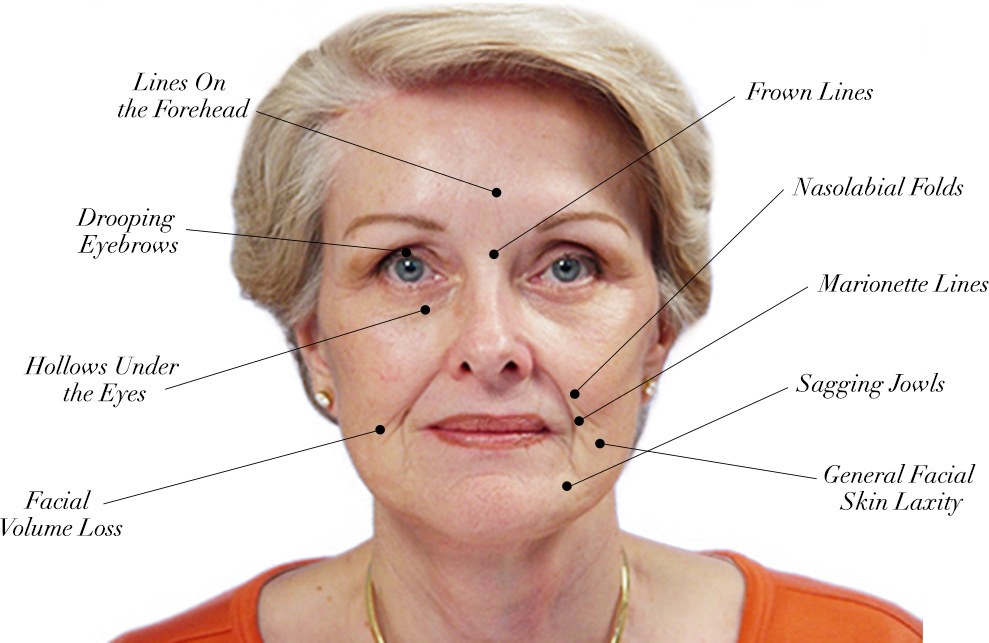As we age, the effects of gravity, sun exposure, and lifestyle choices can contribute to sagging skin, deep wrinkles, and loss of facial volume. A full facelift is a comprehensive surgical procedure designed to rejuvenate the entire face, restoring a more youthful appearance and enhancing facial harmony.
What Is a Full Face Lift?
A full facelift, also known as a rhytidectomy, addresses the lower two-thirds of the face, including the cheeks, jowls, and neck. This procedure involves lifting and tightening the underlying muscles and tissues, removing excess skin, and redistributing facial fat to create a more youthful contour. Unlike mini or midface lifts, a full facelift provides extensive rejuvenation and can significantly improve the signs of aging.
Benefits of a Full Face Lift
A full facelift offers a wide range of advantages, including:
- Comprehensive Rejuvenation: This procedure targets multiple areas of the face, including sagging cheeks, jowls, and neck, providing a thorough transformation.
- Long-Lasting Results: A full facelift typically delivers more enduring results compared to non-surgical options, with effects lasting several years.
- Improved Facial Contours: By tightening loose skin and repositioning underlying tissues, a full facelift enhances facial contours for a more youthful look.
- Increased Self-Confidence: Many patients report a boost in self-esteem and improved body image after undergoing a full facelift.
At Hobbs Clinic, several types of facelifts are offered, each designed to address specific concerns and achieve natural, rejuvenated results. The types of facelifts may include:
- Vertical Facelift: The vertical facelift is a more advanced technique that targets both the upper and lower parts of the face, lifting the skin vertically rather than just horizontally. This approach helps to address sagging around the jawline, cheeks, and neck, providing a more youthful and lifted appearance. It is ideal for patients with significant signs of aging, as it focuses on tightening the deeper layers of the skin and underlying tissues for a natural, long-lasting result. The vertical facelift offers a more dramatic lift, and it can be customized to suit each patient’s unique needs, helping restore facial proportions and contours.
- Traditional Facelift: This procedure targets the lower two-thirds of the face, addressing sagging skin, jowls, and deep lines around the mouth and chin. It provides a more youthful contour by tightening the skin and underlying tissues.
- Mini Facelift: For patients with mild to moderate signs of aging, a mini facelift targets the lower face and neck, lifting the skin and improving the contour of the jawline. It is a less invasive option, often requiring a shorter recovery time.
- SMAS Facelift: The Superficial Musculoaponeurotic System (SMAS) facelift involves lifting the deeper layers of the face, not just the skin. This technique helps achieve a more natural and longer-lasting result, addressing sagging tissues around the face and neck.
- Thread Lift: A non-surgical facelift option, a thread lift uses dissolvable threads to lift and tighten sagging skin. It’s a quicker and less invasive treatment with minimal downtime but can provide subtle results compared to surgical facelifts.
- Neck Lift: A neck lift targets sagging skin and muscles around the neck and jawline. It can be performed alone or in conjunction with a facelift to enhance overall facial rejuvenation.
- Mid-Facelift: Focused on the cheeks and under-eye area, a mid-facelift lifts sagging facial tissue and redefines the cheekbones, addressing deep nasolabial folds and enhancing the youthful contour of the middle face.
Who Is a Candidate for a Full Face Lift?
Ideal candidates for a full facelift typically:
- Are in good overall health with realistic expectations about the surgery and its outcomes.
- Have moderate to severe signs of aging, including sagging skin, deep wrinkles, and volume loss.
- Do not smoke or are willing to quit prior to surgery to promote optimal healing.
- Are committed to following pre-operative and post-operative care instructions for the best results.
Consulting with a qualified plastic surgeon will help determine if a full facelift is the right choice for you.

The Pinnacle Lift Process
The Pinnacle Lift™ process begins with Dr. Fisher carefully analyzing the intricate curves, angles, and proportions of your facial features. By understanding the unique relationships between these elements, he forms a comprehensive picture of your facial structure.
Dr. Fisher will revisit the cosmetic goals discussed during your initial consultation, ensuring that every detail aligns with your desires. He will then craft a tailored, precise plan that prioritizes both your safety and the creation of the most stunning results.
This meticulous planning is followed by the sculpting phase, where Dr. Fisher applies his expertise and artistic vision to create a rejuvenated, natural-looking appearance. His surgical approach is entirely customized, designed to bring your individual features into harmony while achieving an exceptional facelift.
Dr. Fisher’s ability to consistently deliver remarkable outcomes stems from his rare blend of technical proficiency and artistic talent. Guided by both skill and creativity, he addresses every concern and enhances your features, elevating your natural beauty to a level of perfection. Rest assured, your Pinnacle Lift™ will offer one of the finest facelift results, not just in Beverly Hills, but globally.
The Full Face Lift Process: What to Expect
1. Consultation:
During the initial consultation, your surgeon will assess your facial structure, discuss your aesthetic goals, and explain the full facelift procedure. They will review your medical history and any medications you may be taking.
2. Preparation
Pre-operative instructions will be provided, including guidelines for medication use, dietary restrictions, and recommendations for smoking cessation.
3. Procedure
A full facelift typically involves the following steps:
- Anesthesia: The procedure is performed under general anesthesia or intravenous sedation, ensuring your comfort throughout the surgery.
- Incisions: Incisions are strategically placed along the hairline, around the ears, and potentially beneath the chin to minimize visible scarring.
- Lifting and Tightening: The surgeon lifts and repositions the underlying muscles and tissues, removes excess skin, and may also redistribute facial fat for a more youthful contour.
- Closure: The incisions are carefully closed using sutures, clips, or adhesive strips.
The procedure usually takes about three to five hours.
4. Recovery
After surgery, patients can expect some swelling, bruising, and discomfort, which typically subsides within a few weeks. Most patients can return to normal activities within two to four weeks, although complete recovery may take several months.
5. Follow-Up Care
Follow-up appointments will be scheduled to monitor your healing progress and assess the results. Your surgeon will provide post-operative care instructions and may recommend avoiding strenuous activities during the initial recovery period.
Risks and Complications
While a full facelift is generally safe, potential risks and complications may include:
- Infection: There is a risk of infection at the incision sites, which may require treatment.
- Scarring: Although incisions are placed discreetly, some patients may experience noticeable scarring.
- Asymmetry: Some individuals may notice uneven results, which can be addressed with adjustments.
- Nerve Damage: Temporary nerve damage may occur, leading to altered sensation or movement in the facial area.



